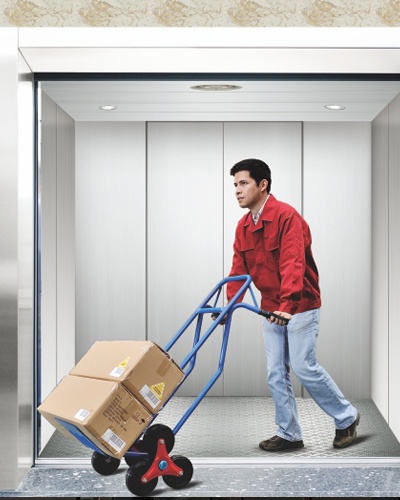China Glass Lifts Manufacturers,Food Elevators Suppliers +86-572-3305657
China Glass Lifts Manufacturers,Food Elevators Suppliers +86-572-3305657
How to Operate a Cargo Elevator There are three types o […]
How to Operate a Cargo Elevator
There are three types of freight elevators. A traditional one is installed via a shaft between brick walls and a motor hoistway. This type of elevator requires heavy construction work, and can accommodate many tons of freight. Free-standing freight elevators, on the other hand, are more modular than traditional elevators and only require the attachment of a motor hoistway to the building structure. Free-standing elevators are also much less expensive to purchase than traditional models.
A cargo lift elevator is the perfect solution for moving materials from one floor to another. They are customizable from one to eight meters and can carry up to 10 tons. Unlike complicated elevator systems, they require no extra engine room or large pit. The cargo lift elevator is also easier to maintain than complex hydraulic or electric systems, and the simple structure allows it to be installed in a building with a limited budget. This type of elevator can be installed in many places, including warehouses.
To control the movement of a cargo elevator, the worker must use an electronic control. An LCD screen shows the position of the cargo elevator in either manual or automatic mode. It is connected to PORTD. An LCD display shows the value of the potentiometer to indicate the position of the cargo elevator. Whether the worker is operating the cargo elevator manually or automatically, the LDC screen can tell the worker the value. They can also see the value of the cargo elevator by interacting with an LCD screen.
The three different types of freight elevators are classified according to their use. Class A freight elevator is designed for general freight loading, while Class B is meant for moving automobiles. Both Class A and Class B freight elevators can lift up to one-fourth of their capacity. The three-tiered classifications provide a range of advantages for various applications. This helps to make the world go round much easier. When properly installed, these freight elevators can significantly reduce operating costs.
A freight elevator is often selected when the load is under 5000kg. It will usually travel at a low speed and can move heavy loads. The nameplate of a freight elevator will not indicate how many people are traveling with it, and it will have a large opening. In addition to the capacity, the interior decoration of a freight elevator is typically more basic. There is also less room for passenger comfort as the doors are usually wider.
A commercial-grade freight elevator is typically called a modular unit. These units are prefabricated, and they usually come with pre-wired components. However, they require construction-grade equipment and a crane to place them. A freight elevator costs a lot to own, and there are numerous expenses throughout its life cycle. In this article, we will review some of these costs and provide you with a comprehensive list of the most common options.

Product Type: Machine roomless freight elevator
Target Markets: Building construction, museums, logistics centers, warehouses
Control System: VVVF
Traction Machine: Permanent magnet synchronous gearless
Door Machine: VVVF inverter door machine
Rated Load (kg): 1000-3000
Rated speed (m/s): 0.5/1.0
Door Open: Double break open the door / Double-sided open the door
Please leave your Email or phone nomber, so we can contact you as soon as possible.